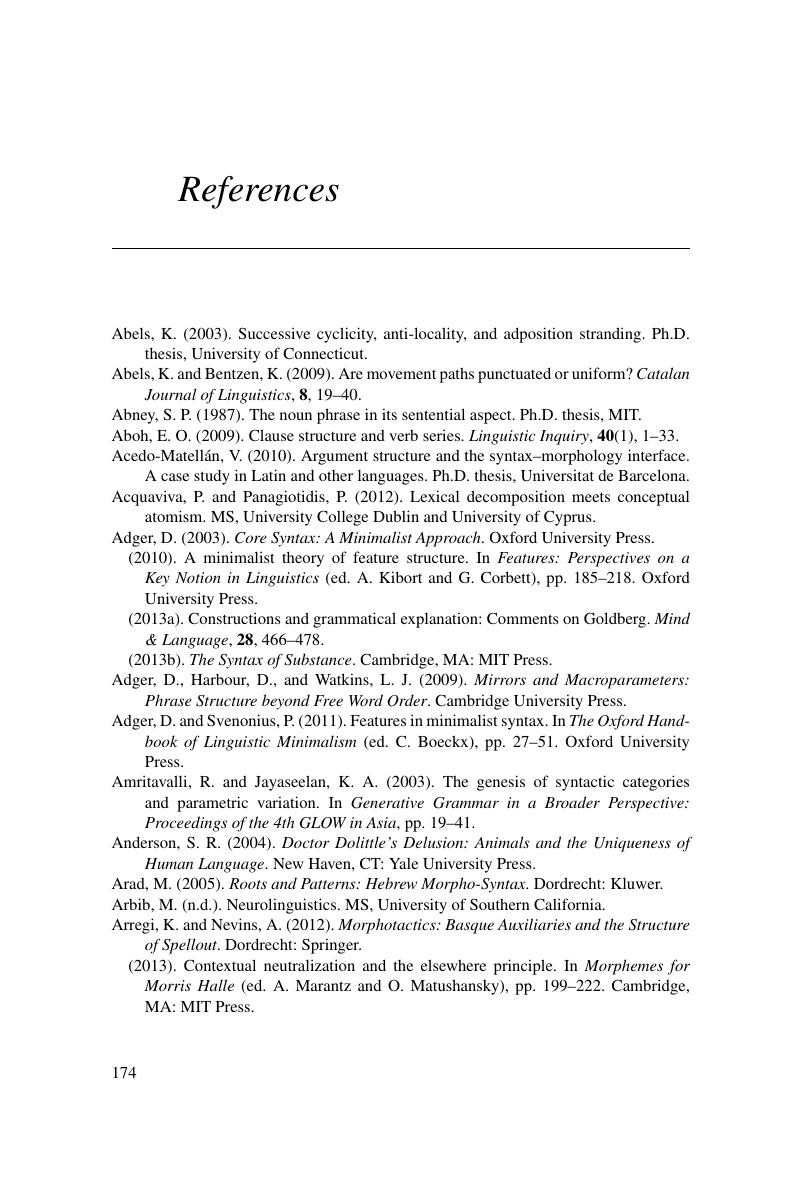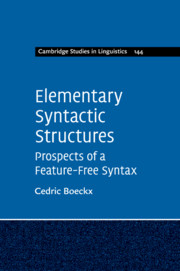Book contents
- Elementary Syntactic Structures
- Cambridge Studies in Linguistics
- Elementary Syntactic Structures
- Copyright page
- Dedication
- Contents
- Figures
- Preface
- Book part
- Glossary
- 1 Biolinguistic concerns
- 2 Syntactic order for free: Merge 𝛼
- 3 Trusting in the external systems: descent with modification
- 4 Elaborate grammatical structures: how (and where) to deal withvariation
- 5 Interdisciplinary prospects
- Book part
- References
- Index
- References
References
Published online by Cambridge University Press: 05 October 2014
- Elementary Syntactic Structures
- Cambridge Studies in Linguistics
- Elementary Syntactic Structures
- Copyright page
- Dedication
- Contents
- Figures
- Preface
- Book part
- Glossary
- 1 Biolinguistic concerns
- 2 Syntactic order for free: Merge 𝛼
- 3 Trusting in the external systems: descent with modification
- 4 Elaborate grammatical structures: how (and where) to deal withvariation
- 5 Interdisciplinary prospects
- Book part
- References
- Index
- References
Summary

- Type
- Chapter
- Information
- Elementary Syntactic StructuresProspects of a Feature-Free Syntax, pp. 174 - 198Publisher: Cambridge University PressPrint publication year: 2014



